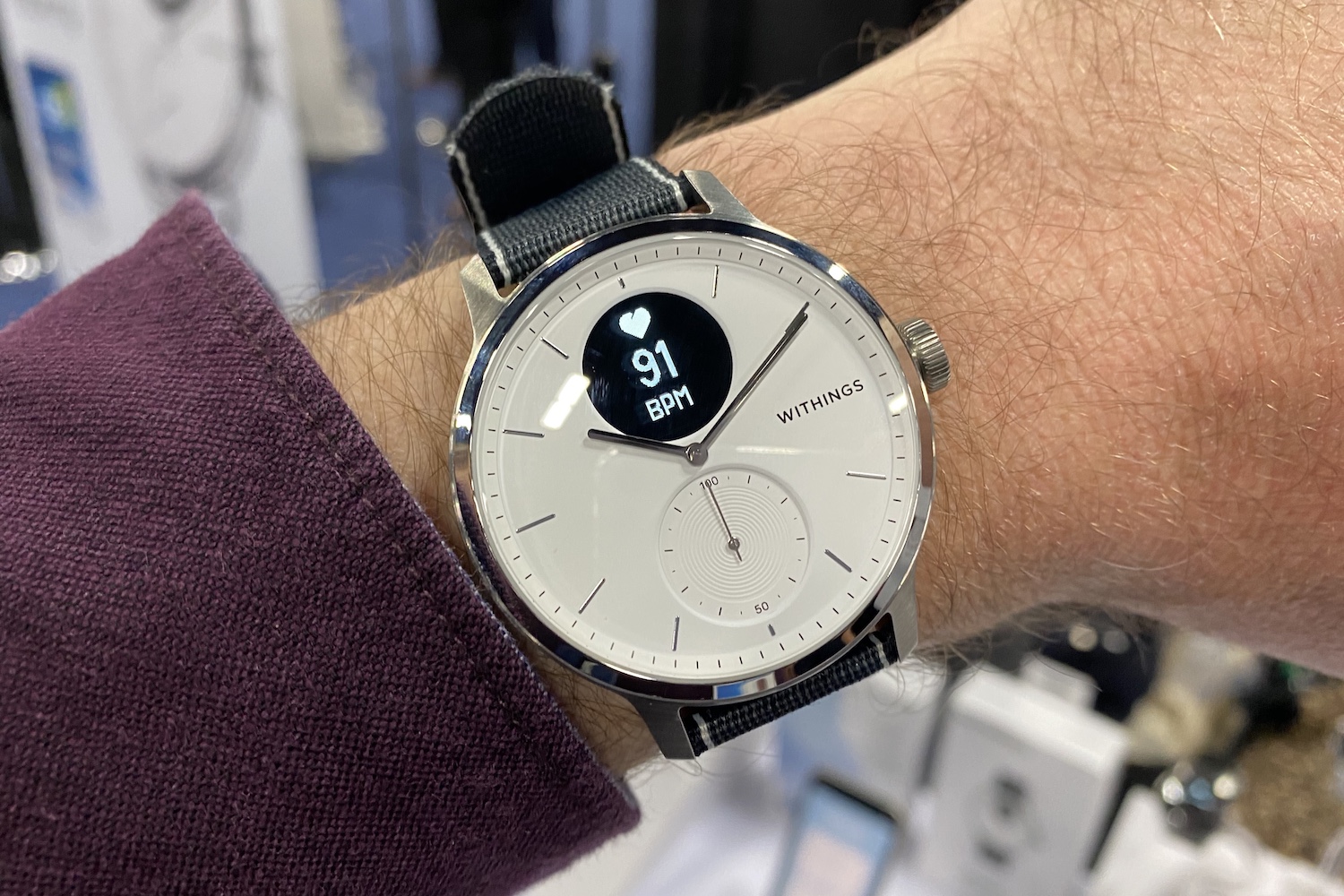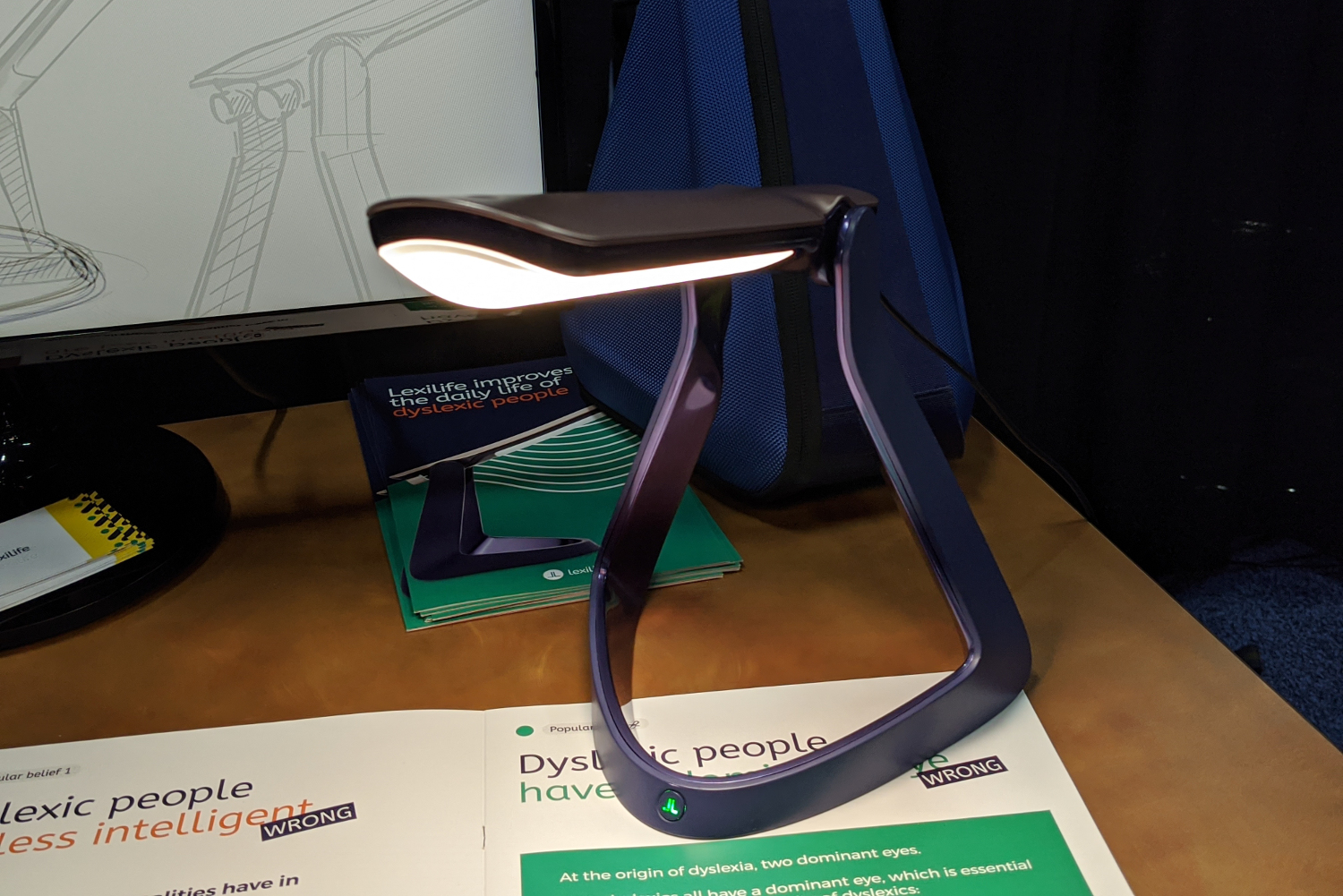This story is part of our continuing coverage of CES 2020, including tech and gadgets from the showroom floor.
There are a lot of wild claims and gadgets of dubious usefulness flying around Las Vegas right now, but CES 2020 is also home to some seriously innovative health and wellness technology that’s aiming to change our world for the better. The best health gadgets help people cope with difficult conditions, alleviate pain, and smooth off some of the hard edges of daily life. These are the ones that have caught our eye so far this year.

Withings ScanWatch
We’re big fans of Withings and its range of hybrid smartwatches that offer long battery life, combined with heart rate tracking and smartphone notifications, all wrapped up in a stylish package on the wrist. With the ScanWatch, Withings has increased the size of the PMOLED screen, but more importantly for your health, it has added an SpO2 sensor to measure oxygen in the blood. This means it can potentially detect sleep apnea — a condition that up to 80% of sufferers are unaware they have — and warn them that they should see a doctor for further tests.
There’s also support for heart rate tracking, with three electrodes capable of giving you an electrocardiogram and potentially detecting irregular heartbeat issues or atrial fibrillation. The Withings ScanWatch comes in two sizes: A 38mm version at $250 and a 42mm version at $300. It will go on sale in the next few months.
Lexilife Reading Lamp for dyslexia
Dyslexia is something of a mystery in that we’re not precisely sure what the cause is and it’s notoriously difficult to diagnose. Some French researchers have suggested that sufferers have two dominant eyes, so images of letters appear correctly but also as a mirror image simultaneously, which can make it hard to read. The Lexilife lamp has been designed with this supposition in mind and it employs powerful LEDs that pulse at an adjustable rate.
Sufferers can tweak a dial on the back of the lamp to find the right frequency of flicker for them to be able to comfortably read. The Lexilife could also potentially be used to help diagnose dyslexia. It’s currently running through the Food and Drug Administration (FDA) approval process, but it’s likely to be quite expensive when it releases, at around $550.
Aktiia cuffless blood pressure monitor
One in three adults in the U.S. have high blood pressure, and it can be a challenge getting them to monitor it properly. Doctors need to know what a patient’s blood pressure is around the clock, instead of getting a single snapshot at a certain time, because blood pressure naturally varies throughout the day. Aktiia has employed off-the-shelf hardware to create an unobtrusive wearable that can monitor your blood pressure on the hour, 24/7, without the need for a cuff or any action on the part of the wearer. Impressively, it’s not far off in terms of accuracy from an invasive radial arterial line.
This technology has the potential to improve many lives and because it uses off-the-shelf hardware, it could be integrated with fitness trackers and smartwatches in the future. For now Aktiia plans to release a wearable without a screen, so there’s nothing to distract wearers or enable them to monitor the results, which can cause undue worry. Designed after consultation with doctors, the Aktiia is currently working its way through the FDA approval process. There’s no price or release date yet.
Tivic Health ClearUp for sinus pain relief

Sinus pain is common. Sadly, there’s a lot that can go wrong with your nose, and inflammation caused by allergies impacts many lives. Long-term sufferers of sinus pain tend to be headache veterans, and the usual remedies include strong painkillers, steam treatments, and saline sprays, the effectiveness of which is often lacking. Tivic Health has developed a completely noninvasive device that treats your sinus pain by disrupting the pain signals being sent to your brain.
To use Tivic’s ClearUp device, you simply hold it against your cheekbone for a few seconds and then move it a little and wait again, working your way around your eye from your nose up to your eyebrow. The device emits a microcurrent, which you’ll barely feel, and it vibrates to let you know when to move on to the next spot. The science behind electrical stimulation of nerves to reduce the sensory perception of pain is well-established, and the ClearUp offers temporary relief for most people. It costs $150, but you can try it out and return it within 30 days if you decide it’s not helping you.
NovaSight’s CureSight for lazy eye
Ambylopia, or lazy eye, is a problem that often develops in early childhood when one eye is relied upon over the other. This creates a negative feedback loop where the weaker eye doesn’t develop and the stronger eye is strained, which can even lead to vision loss. Usually, kids have to wear an eyepatch over the stronger eye to combat ambylopia, but that’s an uncomfortable and undesirable solution for everyone.
NovaSight has developed something called CureSight, which requires lazy eye sufferers to wear special glasses while they watch content on a custom NovaSight tablet capable of tracking the eyes and blurring the position that the stronger eye is focused on to force the brain to bring the weaker eye into service. Since kids can watch Netflix, Amazon Prime, or the Disney Channel while the course of treatment runs, they’re more likely to complete it without complaint. Within three to four months, the ambylopia can be completely cured. CureSight will launch in Europe within the next few months and is coming to the U.S. later in the year.
Follow our live blog for more CES news and announcements.











